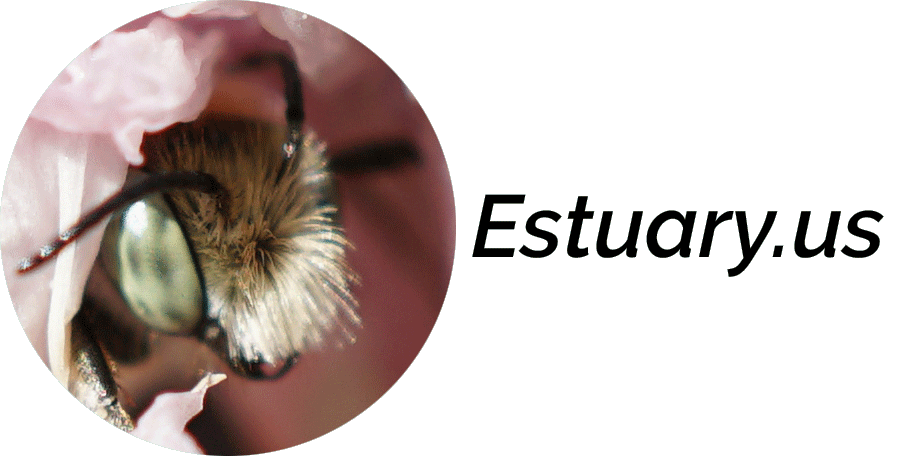The light in autumn has its precise angles. It offers a sharpness, a clarity not encountered in the haze of summer. But fall, when life folds back into itself, to die or become dormant, to rest and rebuild, is a season that may appear to lack complexity, as if some of the depth that was available earlier in the year has been scrubbed away. It all depends how how one looks at it: What are the expectations? The landscape is faded, colors are muted with a complex palette of grays and browns in the foreground, bleached and off-whites are there too, along with the sturdiest of greens and yellows. The sky above is almost always, as usual, blue. Here and there certain flowers continue a sparse blooming. Coyote Brush is ascendant, in full flower at this time.
In Hawk Canyon, an aged Gray Buckeye with thinning wings patrols its bit of territory, flying in loops and feeding on the feathery buds of coyote brush.
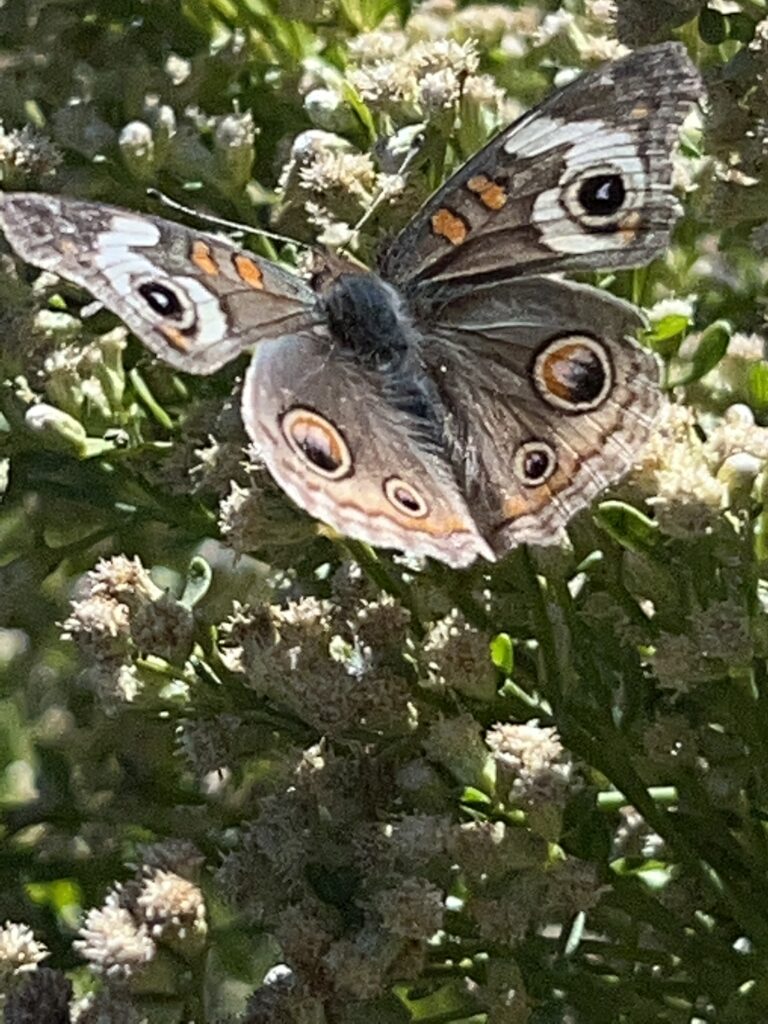
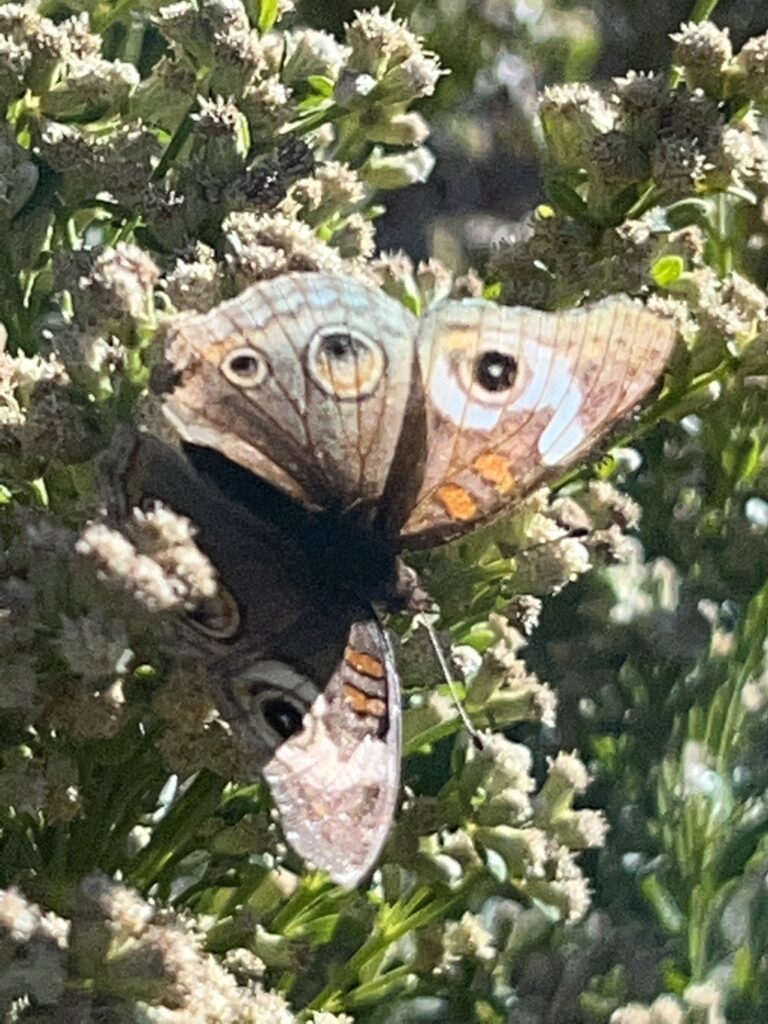
At the Hill Canyon Treatment Plant Wetlands, I hear a duck. A solitary American Coot appears for a moment, in a part of the wetlands pond that still holds water after the recent rain. The coot swims away into the shadows, away from my disrupting presence.
Plants, shrubs and trees surround the wetland pond, they are comprised of native as well as exotic species from elsewhere. I find several Toyons here, full of berries. The Toyon is the state shrub of California; a shrub yes, but it can reach the height and expand beyond the breadth of a small tree.
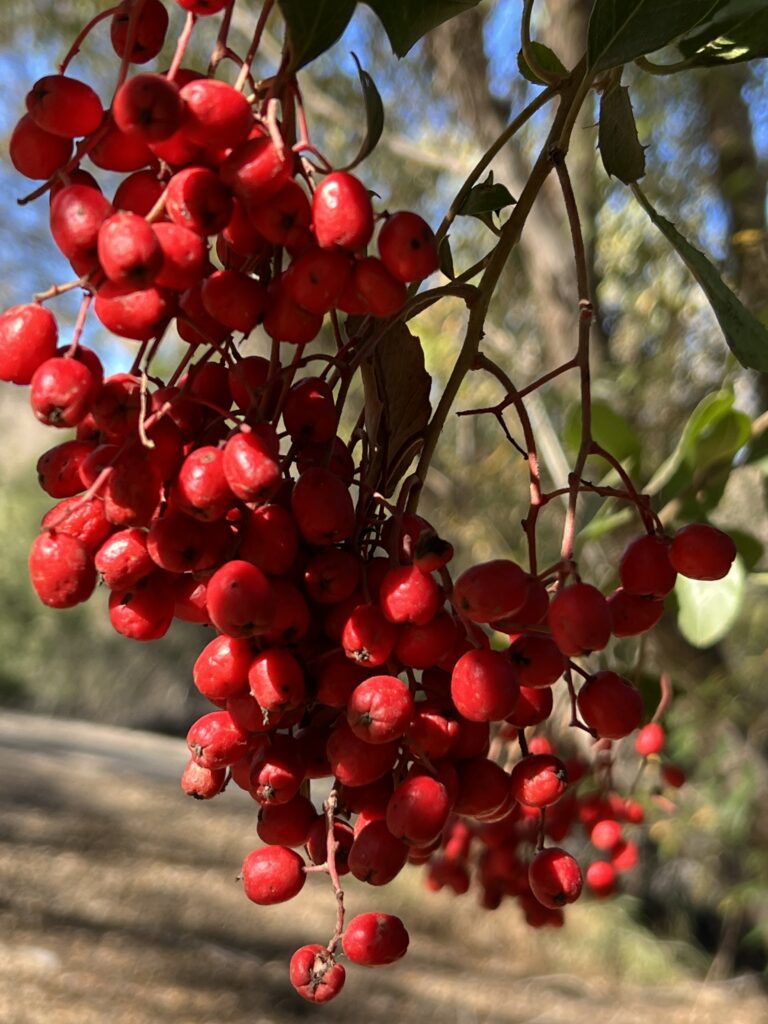
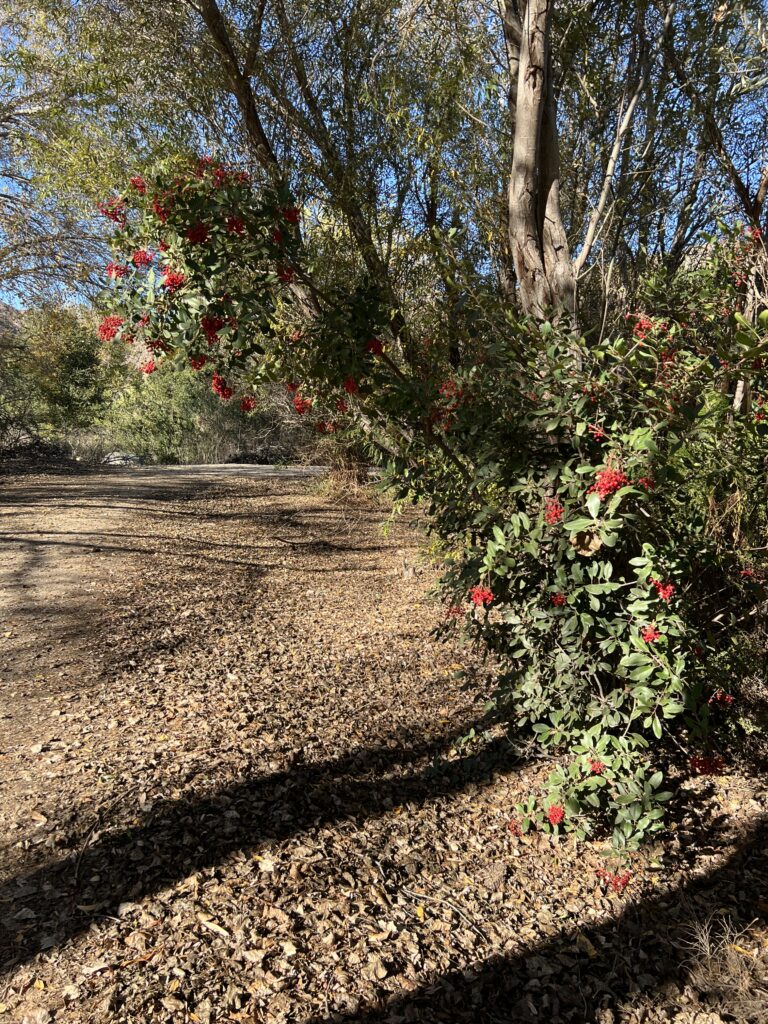
Farther up on the Hill Canyon Fire Road, I walk parallel to the Municipal Service Center (MSC) where residents of Thousand Oaks recycle electronics and dispose of hazardous waste. The facility appears to have completed construction on a solar panel carport “…designed to offset power consumption at the MSC and the…” compressed natural gas (CNG) “…fueling station, and existing electric vehicle charging stations…”. Here I encounter a Painted Lady that is, like the Gray Buckeye, on patrol. Instead of landing on a shrub, this butterfly loops around and lands on the ground several times. The afternoon is cooling off as evening approaches. The sun heads downward, but it still shines on and warms the soil, making it a good place for a cold-blooded arthropod to absorb warmth.
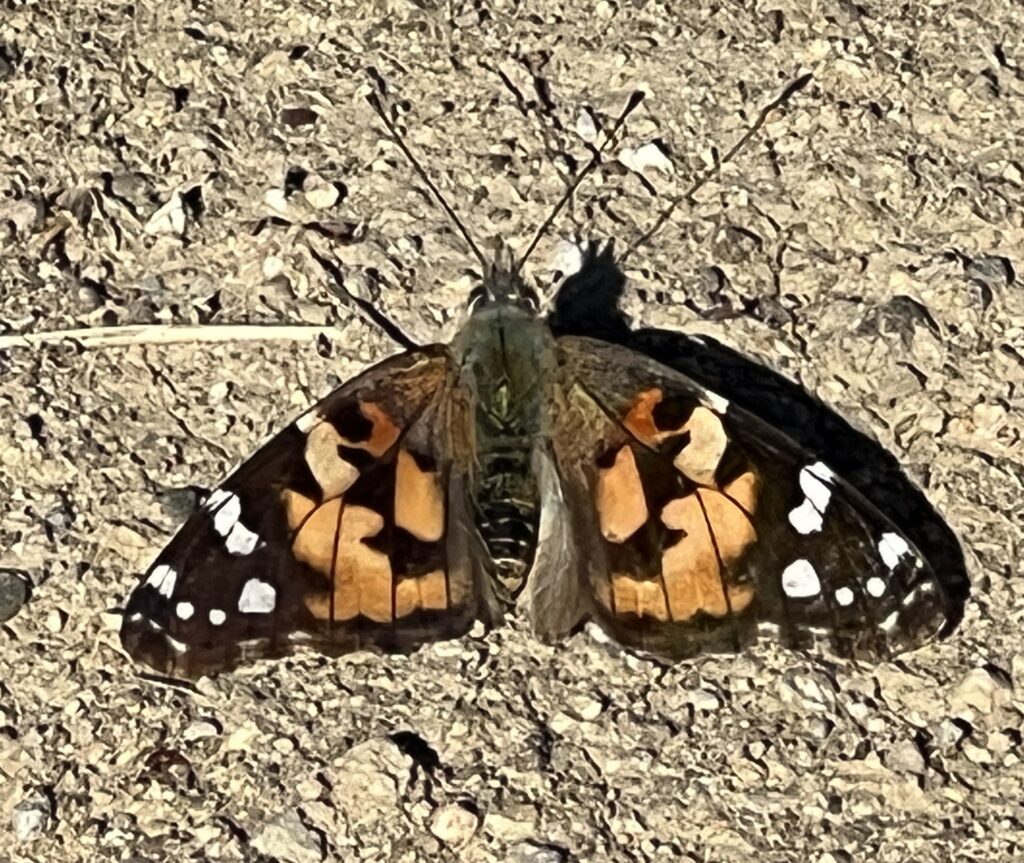
From the service center I retrace my steps until I find an unmaintained single track trail to descend. Because it rained about 10 days ago, the trail is still damp but not muddy. The traction on this steep trail when it is dries out will be poor, with lots of crumbly soil, loose stones, rocks and a deep rut running down the center. I would not think of descending it once it becomes very dry.
The trail leads me back down to Hill Canyon Fire Road, where I am lucky enough to spot a large dragonfly, a Pale-faced Club Skimmer. It lands on a tangle of a shrub where it remains motionless for a luxurious (for the photographer) five minutes, except for an occasional, rapid upward pivot of its head, most of which is made up of two giant blue eyes. The skimmer looks upward and draws a quick foreleg over its eyes, as if grooming. Lighting, background and the limits of my camera prevent a clear photo of wing detail.
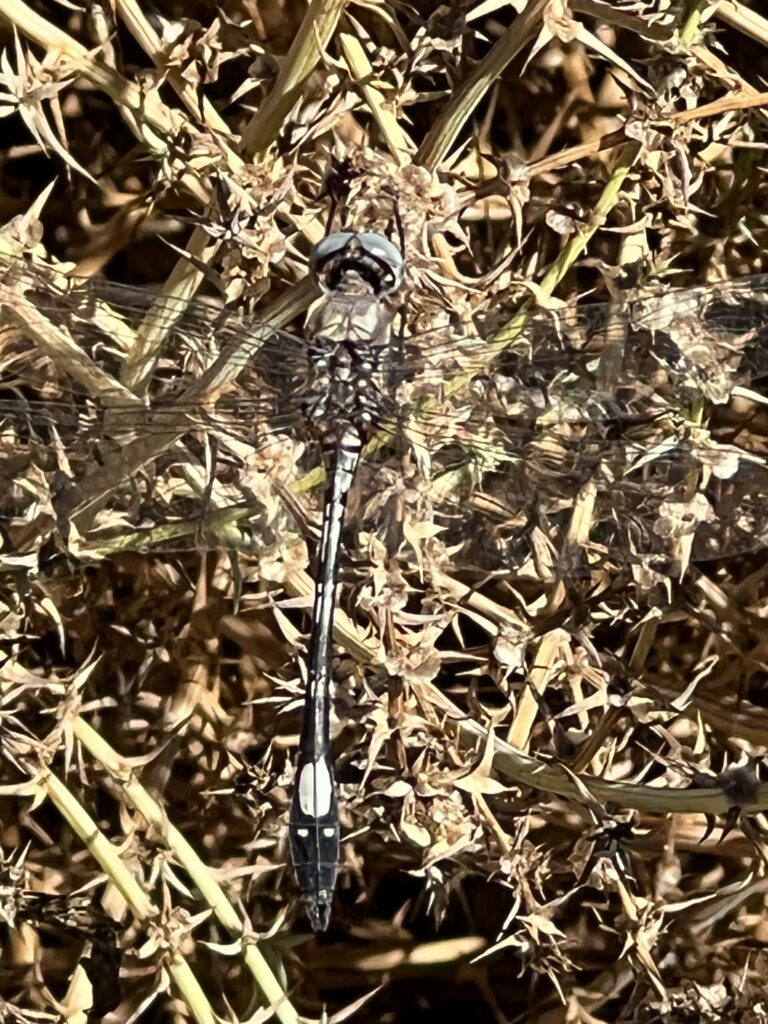
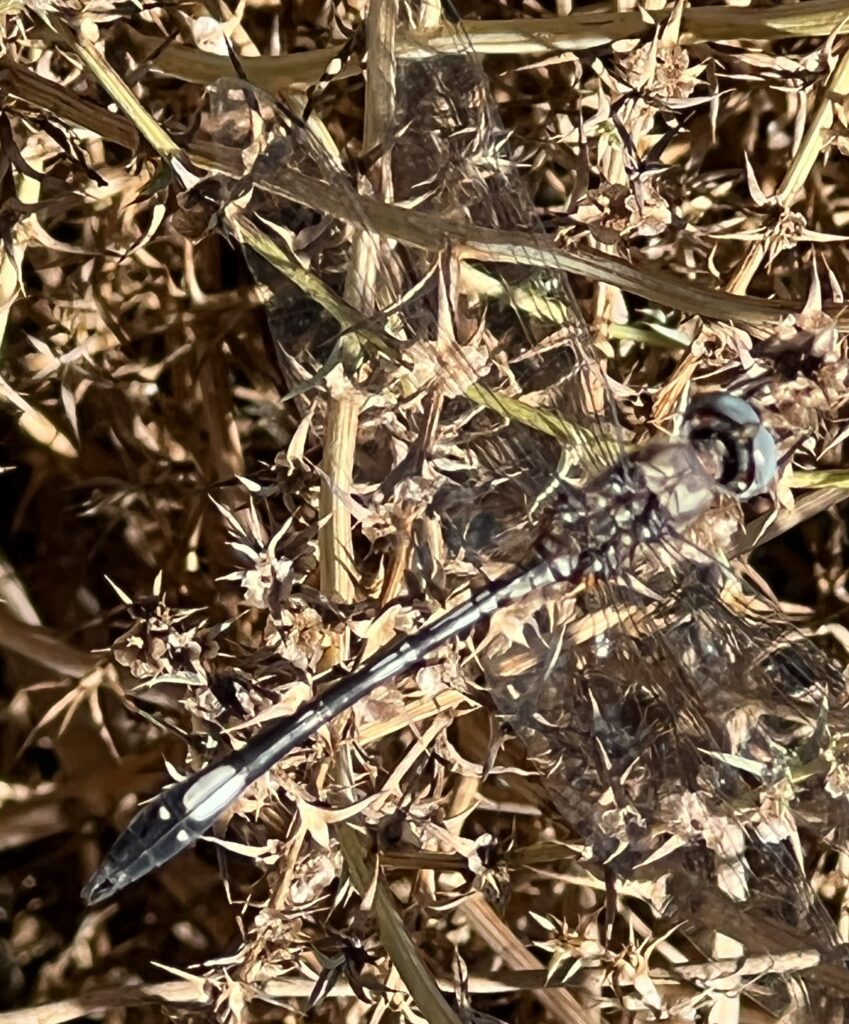
Back on the Hawk Canyon trail the shadows lengthen as the sun falls below the hills to the west. Acorn woodpeckers converse with one another. They fly away from me as I approach their oak trees. I see a couple of them side-by-side, clinging to the bark on an open spot at the base of a pair of tree limbs. A Spotted Towhee flies across my path and perches nearby.

